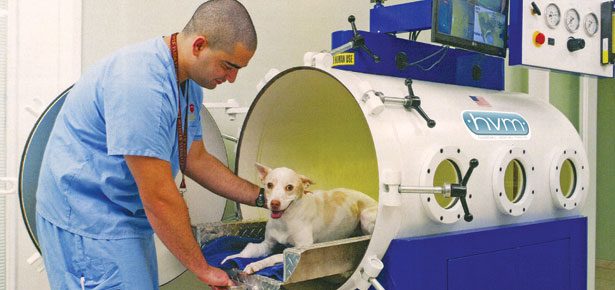

The Doctor’s In – Spinal Disk Disease
Dr. Betsy Brevitz tackles common veterinary vexations
Q: “I have a somewhat arthritic 12-year-old Beagle, and when he started dragging a hind leg, I didn’t think too much of it. But the vet was very concerned about a spinal disk problem, and wanted him to have a myelogram right away. Are disk problems common in dogs? How serious are they?”
A: Spinal disk problems are quite common, and they can be very serious indeed, progressing to irreversible paralysis in some
cases. So it’s wise to pursue a diagnosis without delay if your dog has symptoms of a possible disk problem: severe neck pain,
front leg weakness or paralysis, or lower back pain and weakness or paralysis of one or both hind legs.
The bones of the spine form a canal that shields the spinal cord from bending and pressure. Beneath the canal that houses
the spinal cord, the vertebrae are separated and cushioned by intervertebral disks, which have a gelatinous core and a rubbery outer layer. These disks can break down over time, becoming less elastic and flexible. Occasionally these disks rupture or expand upward into the vertebral canal, putting pressure on the spinal cord and causing pain, leg weakness, or paralysis.
A spinal disk problem is diagnosed by a physical exam and a myelogram or an MRI or CT scan. Plain x-rays of the spine (without contrast dye) can sometimes provide clues to the location of the problem, but a myelogram is much more precise and definitive.
On physical exam, a dog with a spinal disk problem may show neck or lower back pain; exaggerated reflexes (like our knee-kick reflex) in the affected leg or legs; a failure to sense where his feet are, possibly causing him to knuckle a foot over or drag it; paralysis of a leg or legs; loss of superficial pain sensation in the leg (as from a pinprick); or loss of deep pain sensation (as when a toe is pinched hard with forceps).
The progression of these symptoms—from dragging a foot to not feeling deep pain—reflect how deeply the spinal cord has been affected and what the prognosis is.
Like neck instability and wobbler syndrome, spinal disk problems are treated with corticosteroids to reduce swelling and inflammation around the spinal cord, plus strict cage rest. A dog that has a paralyzed leg or legs but still can feel deep pain should have surgery as soon as possible to remove part of the vertebra and disk material and relieve pressure on the spinal cord. The spinal cord of a dog who is paralyzed and hasn’t had deep pain sensation for more than 24 hours is extremely unlikely to recover, so surgery is not beneficial in such cases. Such dogs will remain paralyzed for life.
Compression of the spine by an unstable disk can be sudden or can progress slowly over time.Having your dog examined at the first sign of a problem—neck pain, back pain, or dragging a foot—will allow him to be treated before the condition progresses to irreversible paralysis.
Excerpted from Hound Health Handbook © 2004, 2009 by Urbanhound, LLC Used by permission of Workman Publishing Co., Inc. New York All Rights Reserved Available wherever books are sold.
Join the newsletter and never miss out on dog content again!
"*" indicates required fields
By clicking the arrow, you agree to our web Terms of Use and Privacy & Cookie Policy. Easy unsubscribe links are provided in every email.





